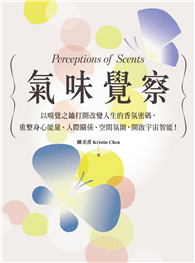Over the course of the twentieth and twenty-first centuries, Harlem has been the capital of both Black America and a global African diaspora, an early home for Italian and Jewish immigrant communities, an important Puerto Rican neighborhood, and a representative site of gentrification. How do we understand the power of a place with so many claims and identifications? Drawing on fiction, sociology, political speech, autobiography, and performance, Sandhya Shukla develops a living theory of Harlem, in which peoples of different backgrounds collide, interact, and borrow from each other, even while Blackness remains crucial.
Cross-Cultural Harlem reveals a dynamic of exchange that provokes a rethinking of spaces such as Black Harlem, El Barrio, and Italian Harlem. Cross-cultural encounters among African Americans, West Indians, Puerto Ricans, Jews, and Italians provide a story of multiplicity that challenges the framework of territorial enclaves. Shukla illuminates the historical processes that have shaped the diversity of Harlem, examining the many dimensions of its Blackness--Southern, African, Caribbean, Puerto Rican, and more--as well as how white ethnicities have been constructed. Considering literary and historical examples such as Langston Hughes’s short story "Spanish Blood," the career of the Italian American left-wing Harlem congressman Vito Marcantonio, and the autobiography of Puerto Rican-Cuban writer Piri Thomas, Shukla argues that cosmopolitanism and racial belonging need not be seen as contradictory. Cross-Cultural Harlem offers a vision of sustained dialogue to respond to the challenges of urban transformations and to affirm the future of Harlem as actual place and global symbol.| FindBook |
有 1 項符合
Cross-Cultural Harlem: Reimagining Race and Place的圖書 |
 |
Cross-Cultural Harlem: Reimagining Race and Place 作者:Shukla 出版社:Columbia University Press 出版日期:2024-06-04 語言:英文 規格:精裝 / 312頁 / 普通級/ 初版 |
| 圖書館借閱 |
| 國家圖書館 | 全國圖書書目資訊網 | 國立公共資訊圖書館 | 電子書服務平台 | MetaCat 跨館整合查詢 |
| 臺北市立圖書館 | 新北市立圖書館 | 基隆市公共圖書館 | 桃園市立圖書館 | 新竹縣公共圖書館 |
| 苗栗縣立圖書館 | 臺中市立圖書館 | 彰化縣公共圖書館 | 南投縣文化局 | 雲林縣公共圖書館 |
| 嘉義縣圖書館 | 臺南市立圖書館 | 高雄市立圖書館 | 屏東縣公共圖書館 | 宜蘭縣公共圖書館 |
| 花蓮縣文化局 | 臺東縣文化處 |
|
|
圖書介紹 - 資料來源:博客來 評分:
圖書名稱:Cross-Cultural Harlem: Reimagining Race and Place
內容簡介
作者簡介
Sandhya Shukla is associate professor of English and American Studies at the University of Virginia, where she is also an affiliate faculty member of the Carter G. Woodson Institute of African American and African Studies. She is the author of India Abroad: Diasporic Cultures of Postwar America and England (2003) and a coeditor of Imagining Our Americas: Toward a Transnational Frame (2007).
|











